Founder of the game design blog Deconstructor of Fun Michail Katkoff reflects on why Supercell fails to make a genre-forming project out of Brawl Stars and whether the game will die before it reaches the world release. The article examines in detail what happened to the game in four big updates and where the developers made mistakes.

Mikhail Katkoff
In June 2017, the Brawl Stars softlonch occurred. They launched their next Supercell game like no other. The softlonch took place during the week of E3, millions of players were shown not just a gameplay cut, but a YouTube broadcast of a full-fledged tournament. The game looked and sounded simple and fun. In the style of Nintendo, if you want. Like the company’s previous three megahits: Clash of Clans, Boom Beach and Clash Royale.
But that was a year ago. Since then, Brawl Stars has been redesigned… three times! And this is not to mention the fact that the market itself has changed radically – now it is dominated by royal battles, and even the pearl of Supercell, Clash Royale, is barely kept in the top 10.
And what now, after so many overwork? Is Brawl Stars capable of becoming a real hit? Will Iliona join Spooky Pop and Battle Buddies – interesting and polished projects that Supercell eventually closed after softlonch?

After each processing, the diagram shows how the income of Brawl Stars temporarily increases. But the project still fails to reach the “plateau”.
A little bit about the MOBA genre
To begin with, I want to talk about one of the most popular game genres in the world – MOBA. A little later I will explain what Brawl Stars has to do with it.
The main game in this genre is League of Legends (LoL) by Riot Games. At first glance, it is quite simple, but in reality it has a fairly high entry threshold and almost infinite depth. The game has a well-established monetization through the sale of skins and characters. At the same time, purchases do not give any advantages to players, so LoL is also an ideal esports discipline, with a daily audience of 30 million players and millions more fans.
LoL has serious competition in the genre on the PC market. There is DOTA 2 – an even more complex and deep game. There is, for example, Heroes of the Storm from Blizzard – an alternative to LoL for less enthusiastic MOBA gamers.
Naturally, the colossal success of LoL, coupled with the growing popularity of esports, inspired various teams to develop mobile analogues of the game, and corporations to finance such projects. But time after time, similar initiatives were expected to fail (in the West – ed.).

More than one MOBA has tried to become a mobile LoL, but none of them has fired in the Western market (in the illustration – Mobile Legends)
Mobile MOBA failures are usually associated with two types of errors.
1) The gameplay is copied from LoL, but there is less content, and the game session time is shorter. This approach of MOBA gamers is not very attractive. At least not enough to tear them away from desktops. And for mobile players who have not played MOBA before, these projects are quite complicated.
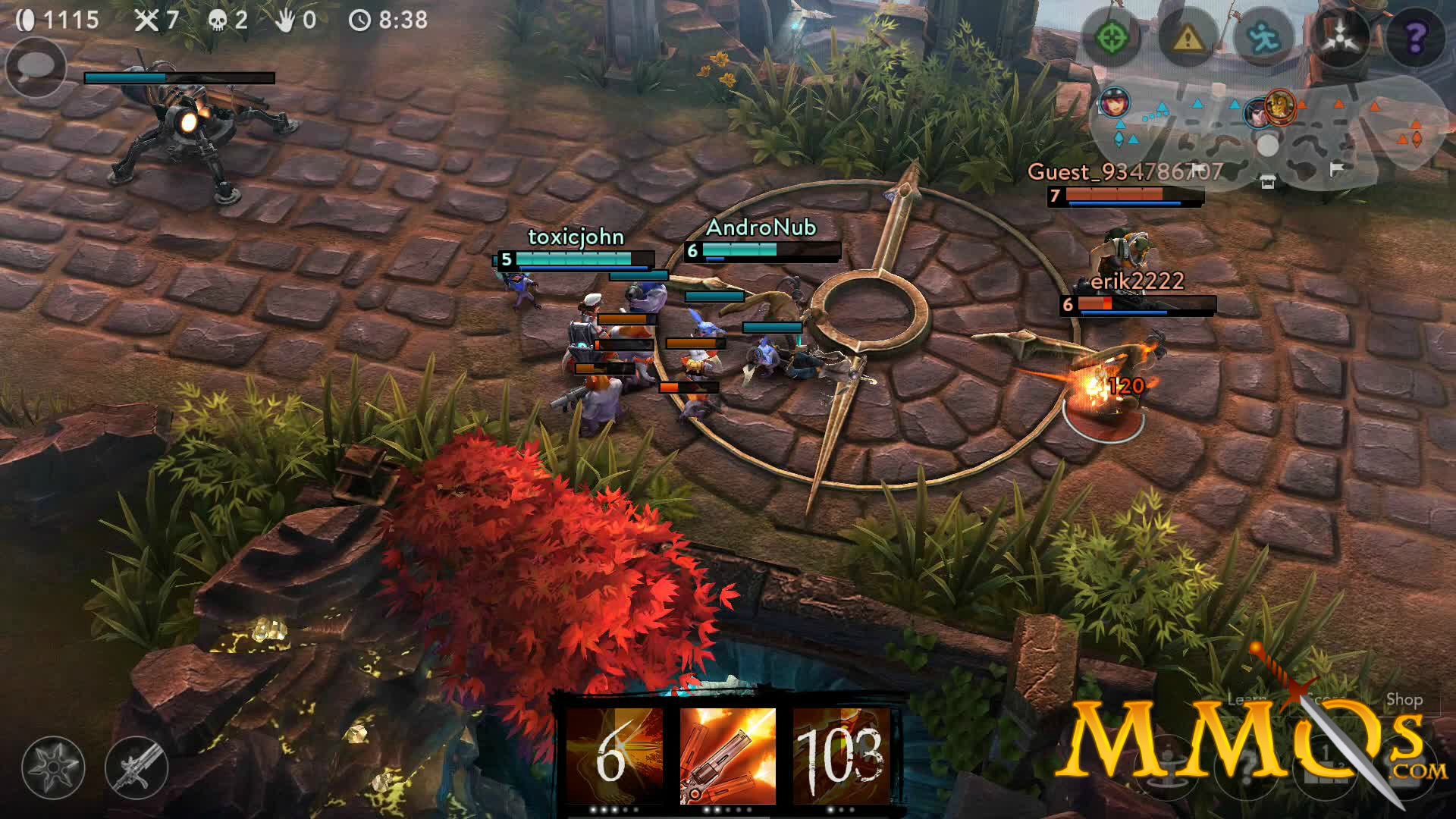
Vainglory is an example of how the game simulates LoL on mobile, offering essentially the same gameplay, but incomparably less content. Such games have too many problems: not enough diversity, a high entry threshold, intense competition in the genre and, as a result, an increase in the cost of attracting a player.
2) The game has changed the basic gameplay towards simplification. This is, if you like, when players are offered a diet coke instead of the usual one. For experienced MOBA players, such projects are a priori uninteresting, and for beginners in the genre, they are still not intuitive enough. Often, due to simplification, these games also have problems with balance.
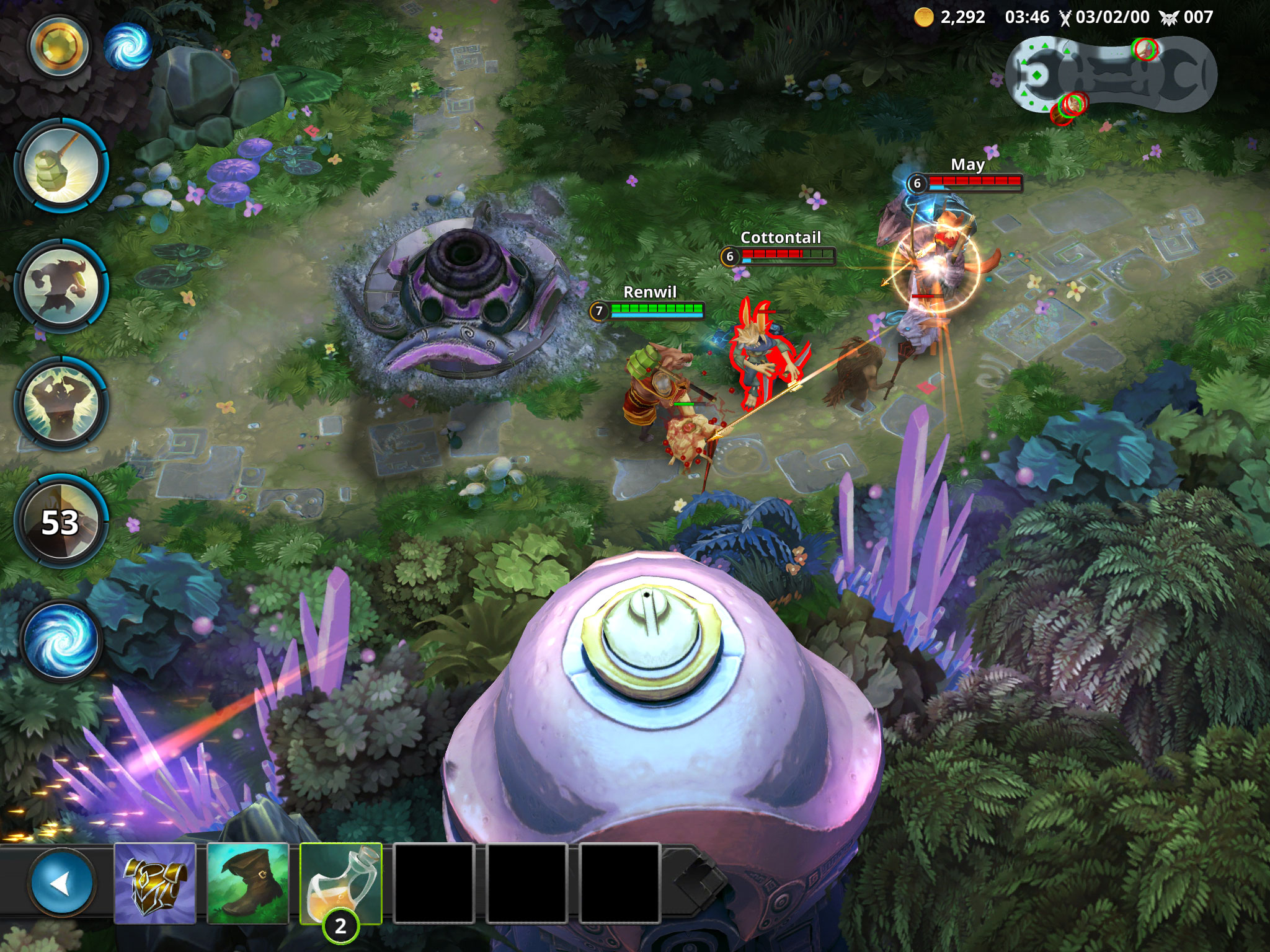
Fates Forever offered players a simplified version of LoL for tablets. The game had much less content and depth. After a long softlonch and an inarticulate launch, the developers made the right decision – they left to work on something more meaningful. In their case, it was the Discord messenger.
But there are two games that have achieved a truly great success in Asia. I’m talking about Mobile Legends and Arena of Valor, the most profitable mobile game in the world. In both, the depth and amount of content are comparable to LoL, and the gameplay changes are insignificant. Basically, the innovations concerned the simplification of management and gameplay.
Why are we even talking about MOBA here? The fact is that Brawl Stars had to offer a new approach to the genre. This is a simplified team battle, three on three, with shootouts.
In Brawl Stars, each player controls one fighter. The fighter has unique attacks – regular and special. Also, the fighters differ in the number of hitpoints and the rate of ammunition regeneration. The goal of the game varies depending on the rules of the battle in which the player takes part.
So, Brawl Stars combines two different categories of games. On the one hand, it looks and plays like a MOBA, with two teams of heroes with different classes fighting each other on a symmetrical map. On the other hand, the game has absorbed the elements of shooters, it is important with what accuracy you shoot. And it also allows you to pump heroes between battles.
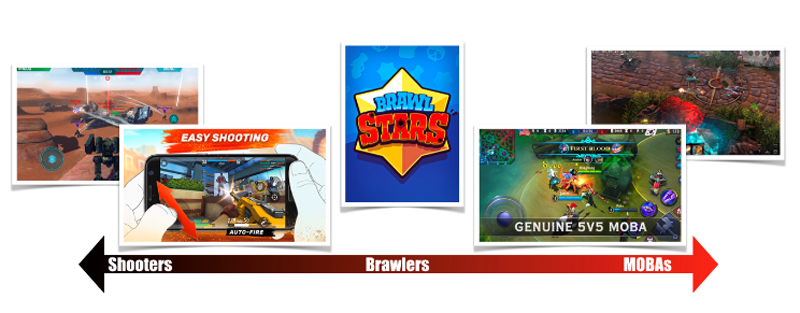
Simply put, Brawl Star is a game of a new genre, located at the junction of MOBA and shooters.
Brawl Stars 1.0 (June 2017)
Brawl Stars broke out instantly – players from all over the world rushed to the Canadian App Store to download the game. During the first month of the softlonch in Canada, the game was downloaded 600 thousand times.
This is explained by the fact that the game really looked fresh and it had a great promo campaign. Take a look at how the tournament was organized in honor of the opening of the game – by the way, this video has one and a half million views:
The game took the concept of the MOBA genre, threw out all the complex and ambiguous moments and added the good old arcade shoot-em-up, funny level design and destructible environment. It turned out to be such an Overwatch with a view from above.
The game cycle of the first version of Brawl Stars was simple and clear:
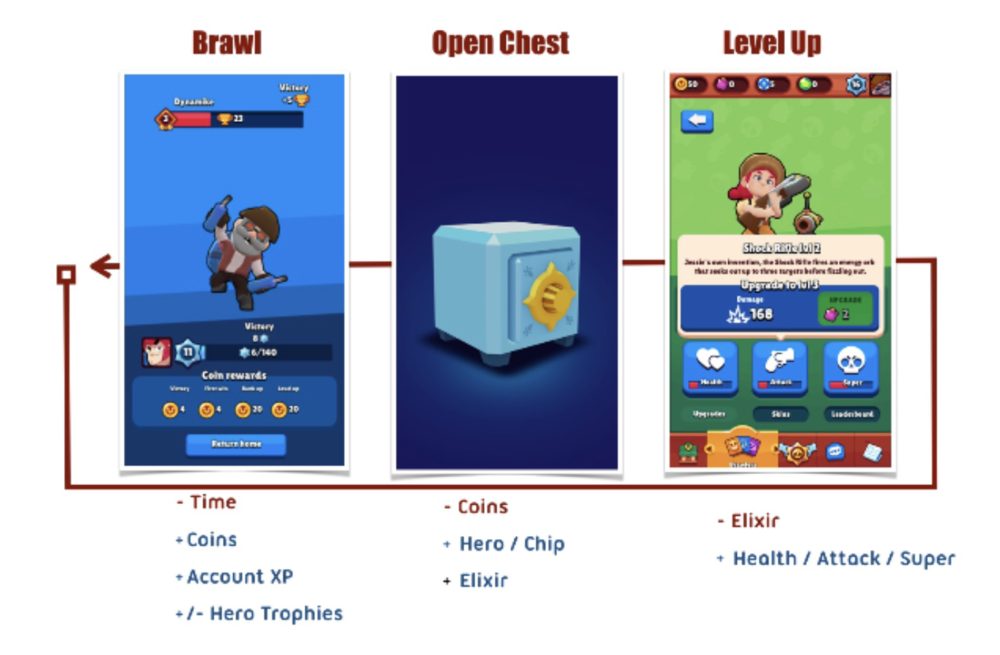
- Players participate in fights to earn coins. Each battle lasts about 2-4 minutes. The number of coins that a player can earn in one day is limited, but it does not interfere with participating in fights. This approach has already been used in Clash Royale – the developers have limited the pumping speed, and left the time of game sessions or their number unlimited.
- In fights, a player can gain or lose trophies. These trophies are used to raise the level of the character.
- After earning 100 coins, the player can spend them on a chest with gacha – random contents. One drop drops out of the chest – a new fighter or an elixir that pumps health and attack.
- If a player receives a fighter from the chest again, he earns a chip instead. For chips, you can purchase fighters of the player’s choice. They cost from 10 to 600 (!) chips.

So, the game was well received by both gamers and developers, as befits Supercell projects. But when the fog of first impressions dissipated, the problems of game design appeared on the surface.
First of all, the problem was (1) inconvenient management. During the development process, different control and shooting options were tested in Brawl Stars. Initially, the game had movement using taps and a horizontal screen. By the beta stage, the screen orientation was portrait and players were offered two options:
A) Tap to move, tap and pull to shoot.
B) Use the joystick to move, tap to shoot.
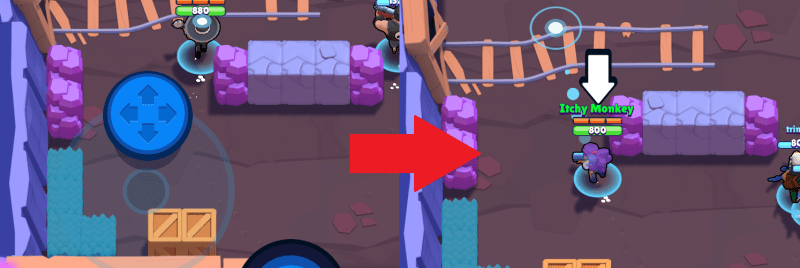
An A/B test of two control systems during beta revealed that neither is inferior to the other in key metrics. However, players who started with scheme A) subsequently switched to scheme B) more often. That is, most players preferred to control with two thumbs – one to use a joystick, and the other to shoot.
However, there was a problem here – it was inconvenient to play a game with portrait orientation with two thumbs. When the opponent was under the game character, the player’s fingers covered all important information.
Inconvenient controls alone are enough to completely kill the esports potential of the game. But Brawl Stars also had (2) a poor progress system. At the time of launch, there were only 15 fighters in the game, so the gacha was shallow, and the mechanics of issuing duplicates seemed meaningless.
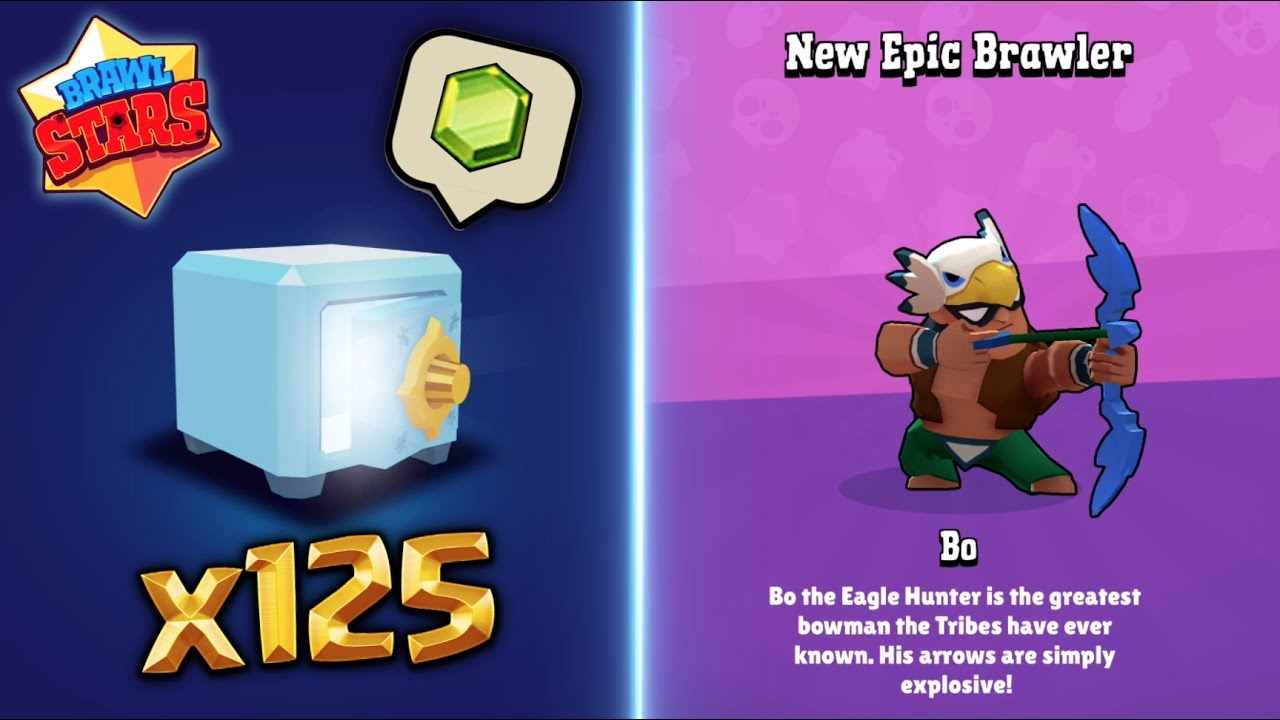
In fact, the Brawl Stars gacha gave players two types of loot: elixirs that increase the stats of fighters, and chips that act similarly to dust in Hearthstone. More precisely, duplicates of characters were converted into chips – because of the small variety of fighters, the same heroes fell out constantly. And each purchase of a rare fighter, which could not be found in the chest, cost more than the previous one (the cost of characters varied, that is, it was necessary to spend, conditionally, 100 chips on a less rare fighter, and 300 on a rarer one).
As for the elixirs for pumping fighters, the effect of them was weak, so the players got bored of collecting gacha.
Due to the lack of content, the game (3) lacked the depth of gameplay. Of course, it was possible to chop perfectly in it and the mechanics were set up so that the intrigue remained in the match until the very end. But the game had too simplistic gameplay, and nothing motivated the players to try to play for different fighters. Ultimately, Brawl Stars quickly got bored.

In addition, (4) the chosen topic was not impressed either. A western-style game – it sounds, of course, fun, but in depth this setting can not be compared with fantasy, Sci-Fi or military history. The theme did not inspire developers to create new characters, but on the contrary, limited – it is difficult to create interesting fighters when the choice is limited to cowboys, sheriffs, Indians and maids.
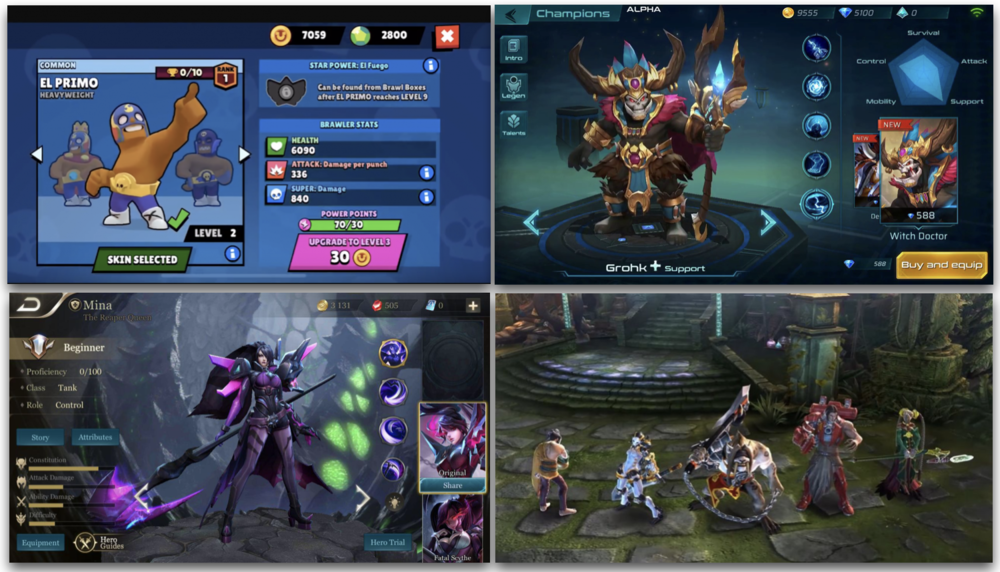
Objectively speaking, Brawl Stars can’t compete with other modern games at all, where the emphasis is on a variety of characters. Paladin Strike (top right), Arena of Valor (bottom left) and Vainglory (bottom right) are just better. Comparing Brawl Stars with these games is like comparing Fiat with Mercedes, Audi and BMW.
And, finally, the last problem of the game is (5) an unassuming style and poor quality of art. Supercell made a name for themselves with games with simple art that easily turned into animation, and, more importantly, allowed them to distinguish what was happening on the screen.
In Brawl Stars, too, everything is clear, but the art looks childish and cheap, and the difference between portraits of fighters and their animated figures is annoying. I have a feeling that the lack of high-quality 3D rendering of characters has killed the desire in players to collect fighters.
So, the Brawl Stars softlonch was grandiose. Popular streamers who played Clash Royale, Boom Beach and Clash of Clans moved to the game. In addition, Brawl Stars quickly developed a superactive community on Reddit – which, however, eventually went to the game’s detriment. While Supercell was messing with meta, gamers demanded more fighters, more game modes, more maps. They were annoyed that the developers, instead of adding content to the game, were engaged in new features.
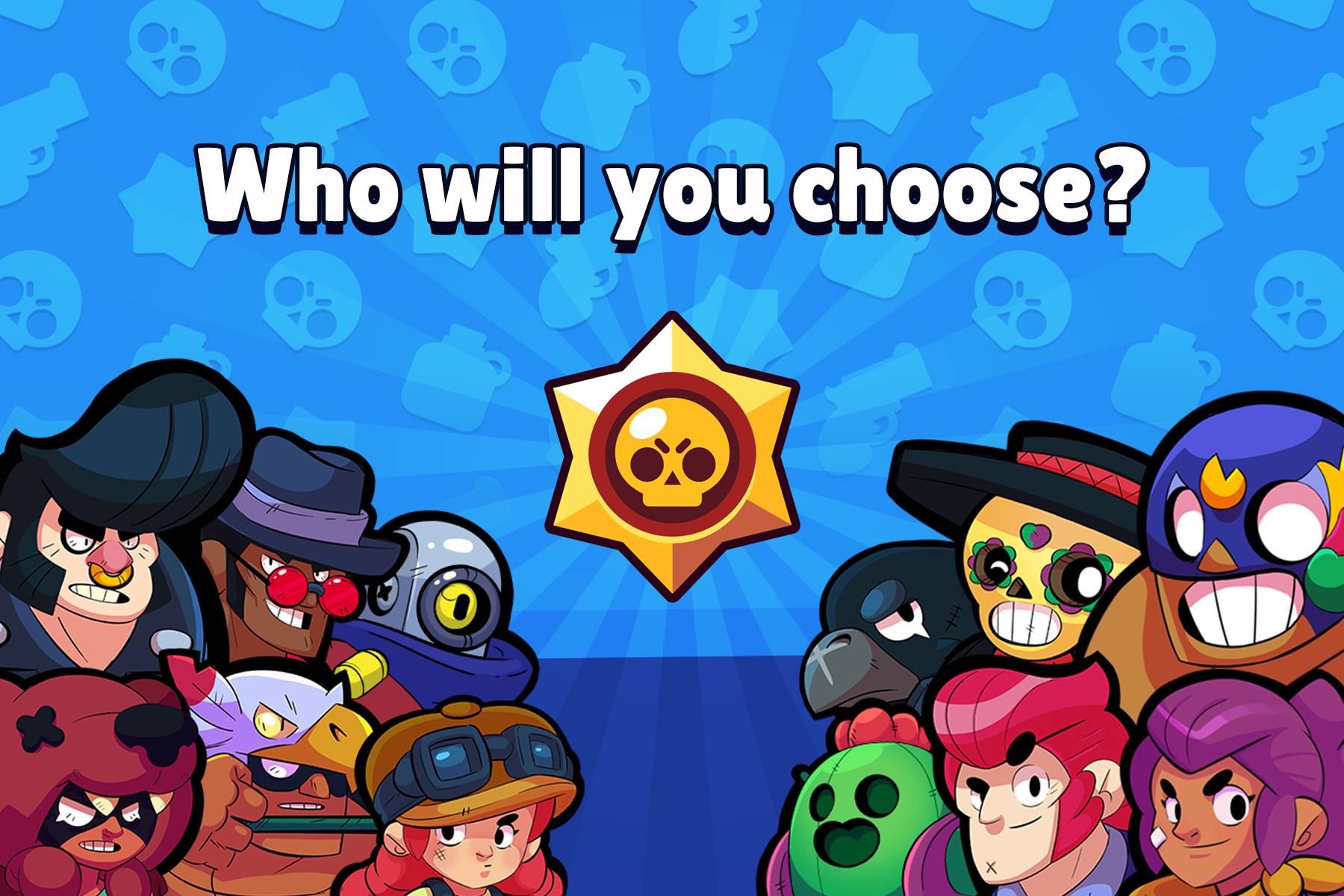
After a couple of months and a couple of updates, it became clear that Supercell would not be able to make Brawl Stars a genre-forming project, as happened with Clash Royale, Clash of Clans and Hay Day. But the team of developers did not abandon the project, it was aimed at fixing it.
Brawl Stars 2.0 (September 2017)
Six months after the launch, Brawl Stars received a huge update. The changes did not affect the main gameplay, but affected the mechanics on which the progress system is tied.
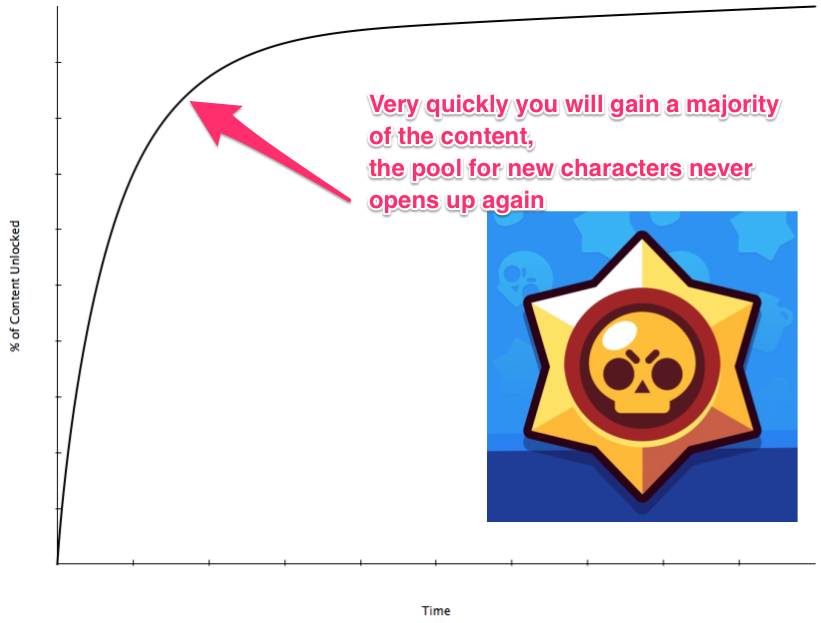
The main problem of the original version was gacha: 1) the game lacked content; 2) duplicates were practically useless; 3) the pace of progress made the game uninteresting – most of the content was opened very quickly, and for each next fighter had to suffer with the accumulation of chips.
Probably (1) the main change that the update made concerned gacha.
The new gacha issued upgrades in the form of badges and medals that pumped some one characteristic of the fighter. Another type of loot – tokens – allowed the player to independently choose which skill to develop (previously elixirs were used for this, but now they have been removed from the game).
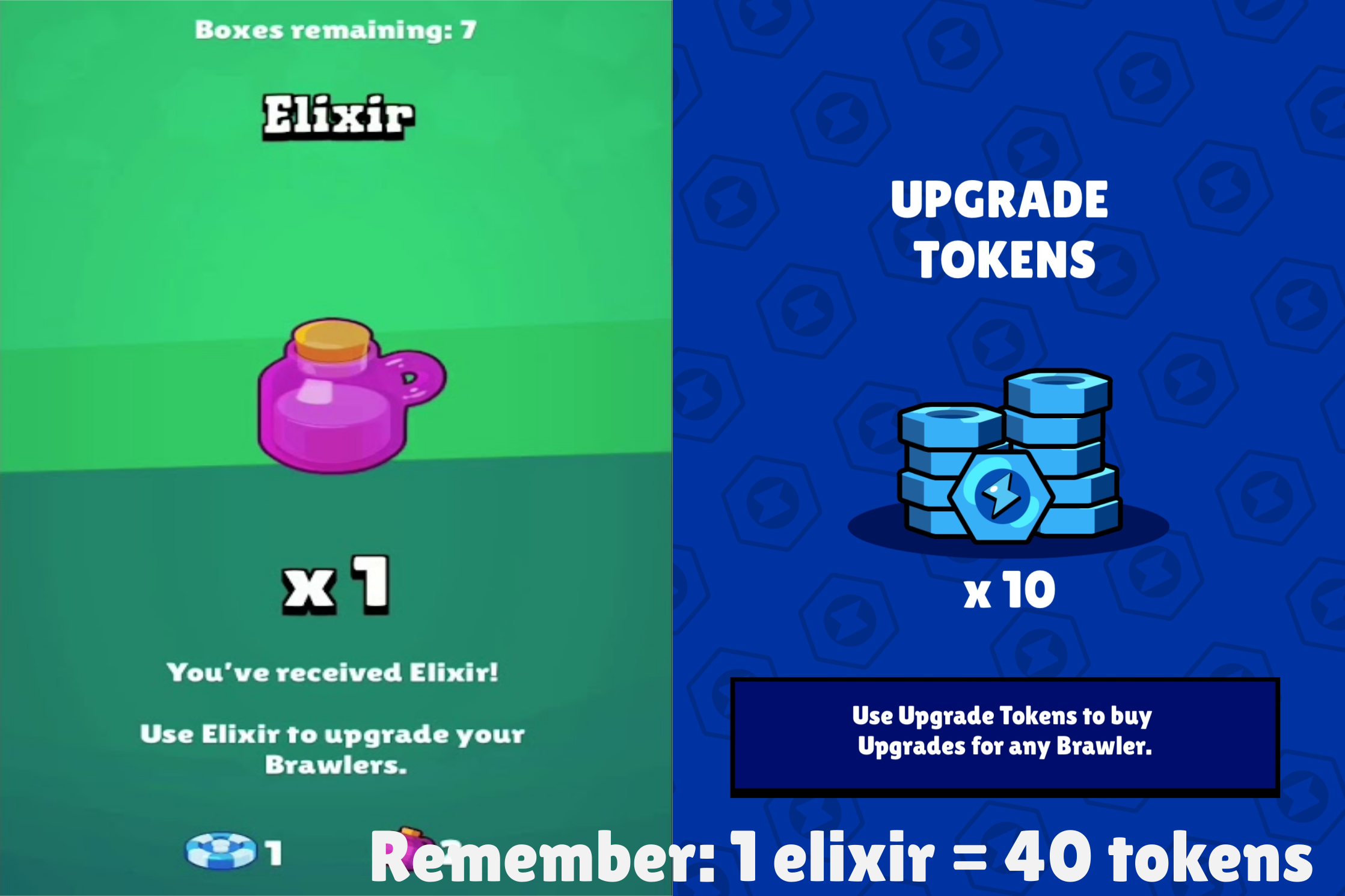
The most important thing is that the mechanics of duplicates have been removed. There was no longer any need to accumulate endless chips – each fighter could be caught by the player only once, and the probability of opening all the characters in this way increased.
Each character in the new version (2.) received a unique superpower, which was opened after the full pumping of the fighter. This motivated the players to pump the fighters to the maximum, and at the same time made the gameplay more variable – each superpower brought new mechanics to the game. So the developers tried to solve the problem of monotony and insufficient depth of gameplay.
The update also brought the game a new mode – (3.) Special events. They were held once a week, and to participate in the event, the player needed a ticket. Tickets could be bought directly or obtained through gacha.

Game rooms with a choice of events
With the help of special events, developers wanted to increase player engagement by offering something unique on weekends when the audience was less active.
By the way, both superpowers and special events exist in the current version of Brawl Stars.
Another fundamental change is (4.) a completely redesigned user interface. The store, the game room, the fighter selection screen have changed their appearance. The game now looks much better.
Do not forget that Supercell (5.) has changed the functionality of the game room, making it convenient to organize matches and tournaments.

Despite such a major overhaul and the addition of new fighters to the game, Brawl Stars was still “just a hit.” It was impossible to expect that after the global launch, it would get into the regional top 10 most earning games. Moreover, a couple of weeks after the update, the game, which was still in the softlonch in Canada, lost its place in the Canadian top.
Any other company in such a situation would have already released the project, but the Brawl Stars development team decided that they could achieve more…
Brawl Stars 3.0 (December 2017)
When 10 months have passed since the most grandiose softlonch in the world, Brawl Stars has returned in a new form. This time, the team threw all its strength into solving two fundamental problems of the project – management and the progress system.
In the video dedicated to the third update, you can see that popular streamers were not particularly happy with the next large-scale changes.
The only solution to the control problem that the developers found was the transition to a horizontal screen and the adaptation of the scheme that is used in Arena of Valor, a MOBA hit from Tencent.
In the new scheme, the player controlled the D-pad with his left thumb, and pressed two buttons with his right – one for a normal attack, the other for a special one. To aim, you had to hold down the button, move your finger in the right direction and release.
Also, an auto-sight was added to the game – the player could simply press the attack button, and his fighter shot at the nearest enemy.
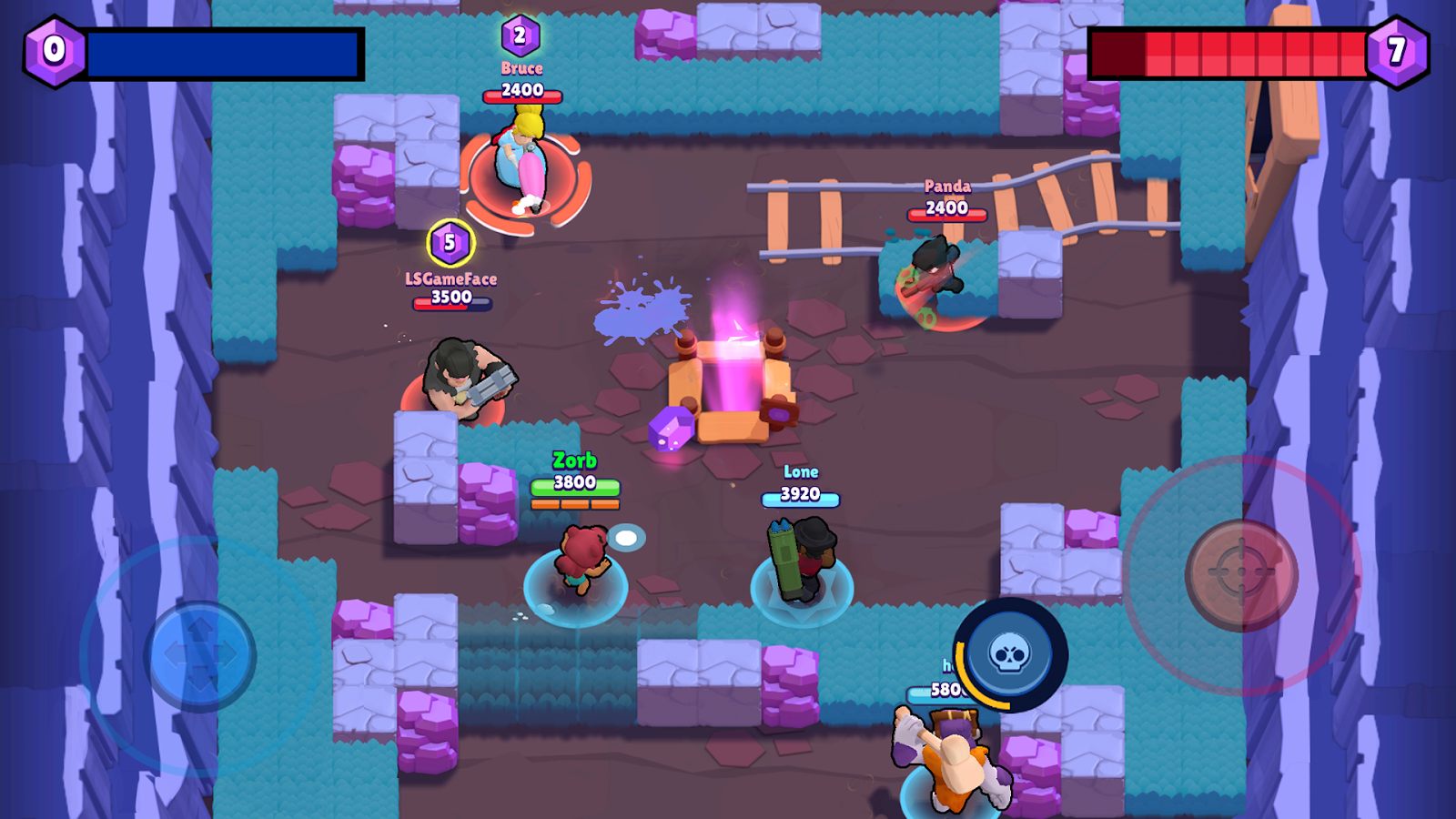
Tap shooting, which the players liked, was removed from the game. And that was a mistake. I am convinced that the previous control scheme had to be left for a while so that the transition to a completely new scheme would be painless.
In the end, a change in the control scheme buried the game. The scheme itself was quite good, some players were happy with it. But the very active community on Reddit was extremely unhappy. The points of their criticism were as follows:
1) The scale of the game screen has decreased, and it has become difficult to distinguish between fighters.
2) Fighters with long-range weapons did not see their targets – after all, the levels were designed for a vertical screen.
3) The game began to look worse, and the fighters moved up and down slower than right and left.

4) Brawl Stars has become less strategic: flanking attacks, for which players previously moved along the edge of the level, have become less effective with a horizontal screen.
5) With a horizontal screen and an asymmetric control scheme, right-handed players gained an advantage.
6) Auto-sight simplified the game for beginners, reducing the influence of skill. Naturally, this infuriated experienced players.
7) The most important thing is that the change in the control scheme forced the players to re-learn how to play Brawl Stars. It’s one thing to fix a meta-game: adding new fighters and levels to the game, editing the balance. Any community only welcomes this. But a complete redrawing of the game is quite another matter. This caused a storm of indignation.
As for the change in the system of game progress, it was expected, because neither the first nor the second version of gachi could last long. In its third version, the gacha in Brawl Stars again resembled the one in Clash Royale, and the badges and medals that appeared just a few months ago have gone into oblivion.
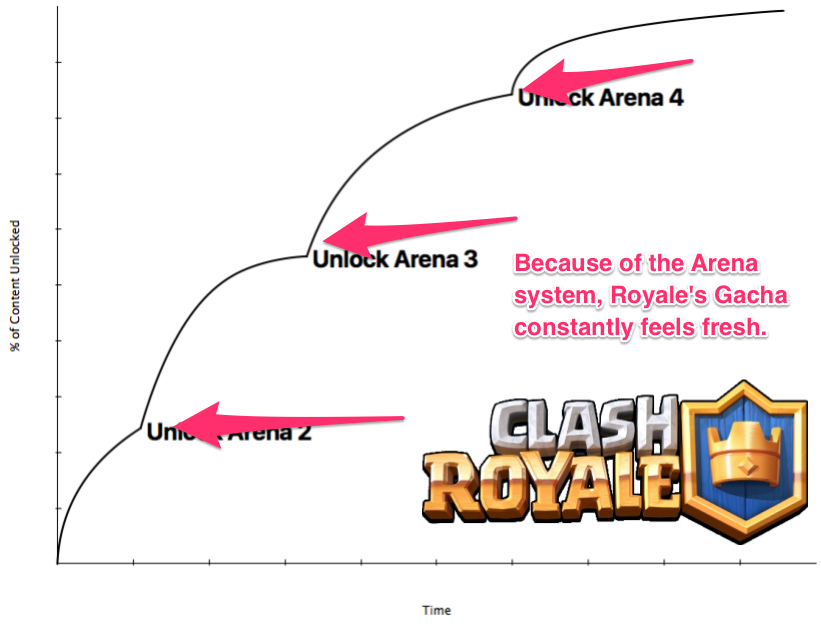
The main game cycle in the third version of Brawl Stars was simple and similar to the original:
- The player participates in fights to earn keys that can open chests. That is, the keys completely replaced the coins from the first versions.
- Coins are now one of the types of drop from chests. Also in the chests again (!) you can find duplicates of fighters. Both coins and duplicates are used to upgrade characters, exactly as it is arranged in Clash Royale.
- As before, in fights, the player can get or lose trophies, with which you can raise the level of the fighter.
- The functionality of the store is now completely changed. The store is full of daily offers and bundles, the game strives in every way to raise the conversion rate and motivates players to make purchases. Now that the functionality of coins and duplicates has changed, the game has a stable monetization model, it remains only to inject new content.

Version 3.0 Ratings
By all metrics, the third version of Brawl Stars turned out to be a complete failure. It was still a fun game, but it didn’t have the resources to meet the demands of the market, where, after the Brawl Stars softlonch, the invasion of games in the battle royale genre began.
While the developers worked tirelessly, solving problems with management and metagame, they missed the fact that the gameplay of the game simply lacks depth comparable to that of the opponents.
In other words, in terms of the availability and design of the sessions, Brawl Stars met the requirements of its time, but it no longer met the demands of mobile players. They now had Fortnite and PUBG, with which Brawl Stars needed to compete somehow.
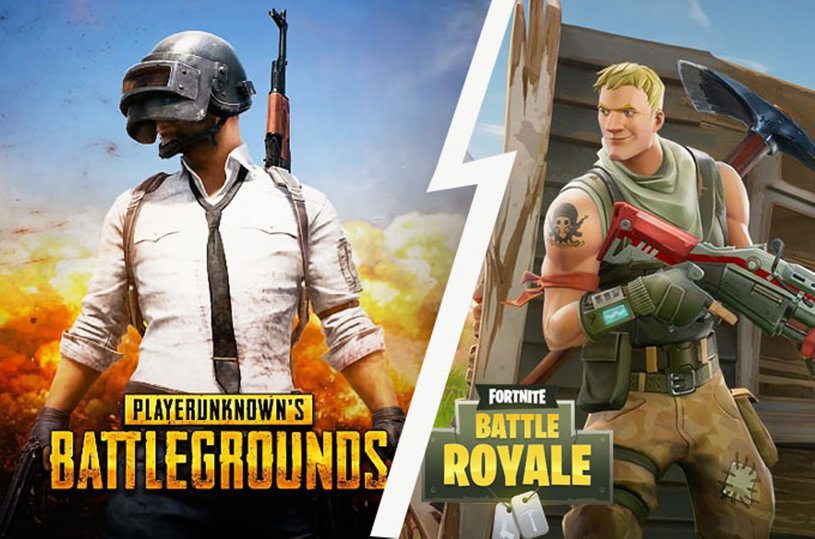
Brawl Stars 4.0 (May 2018)
In the latest update, the developers have included everything they could. In the new version appeared:
- two new fighters;
- new modes, such as robbery mode – each team had a safe, which the rivals tried to undermine;
- the ability to watch other people’s matches and add other players as friends;
- improved tournament system;
- monetization from advertising – for watching the video, the player received a double reward for the fight;
- a new economy that made it easier to get the keys to the chests;
- for winning various gaming events, gamers were awarded a special star key, which pushed them to play in different modes;
- fixed auto-sight.
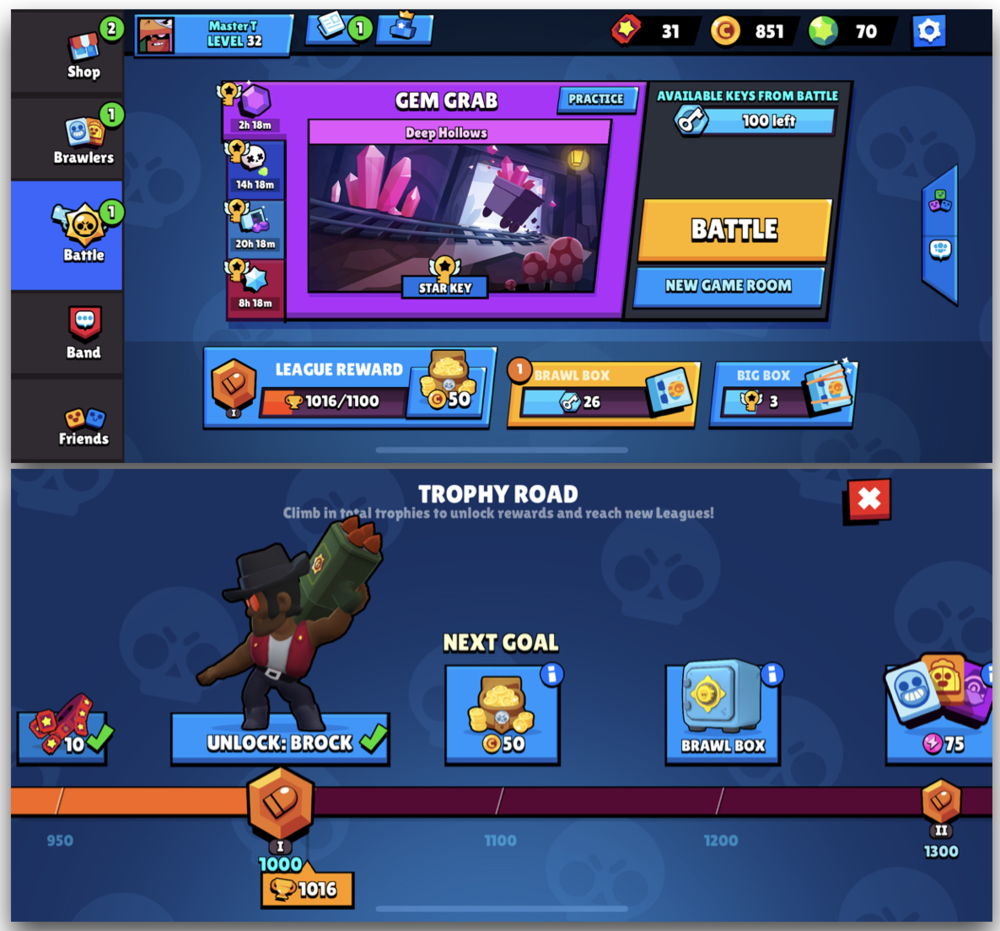
With the latest update, the game’s excellent UI and UX have only gotten better. And the new tournament system has become a great help for the grind.
But this fantastically rich update did not fix the main thing – it did not return the portrait orientation of the screen. The game was rapidly losing its old audience, and new players were not always able to captivate for a long time. And although the user rating of this update was half a point higher than the previous one, it was not enough for a global launch.
No streamers were invited to present the latest update, there was no studio – just the community manager of the game told about the changes. He directly admitted that if this update does not improve the situation of the game, it will be closed. As for the control system, his comment was as follows: “We did not choose between a portrait and a horizontal screen. We were choosing between a horizontal screen and the death of the game.”
I believe that the key mistake of the developers was the introduction of an auto-sight – it actually killed the game. It was because of the auto-sight that the audience began to leave the project en masse.
It’s not just that the auto-sight broke the balance of the game, although, indeed, because of it, some fighters have become much better than others. But in the end, it all came down to the fact that this mechanic deprived the game of depth, and gamers of the opportunity to develop their gaming skills.
One could argue that the game is actually deep: thousands of combinations of fighters, team tactics, different maps and game modes – even after a few months, the game can provide you with something new. Moreover, after the launch, she would probably receive regular injections of content.

But for Brawl Stars, the most important element of a player’s skill was management. Learn how to control your character – and you are halfway to victory. This is exactly what any beginner faced in the early stages of the game’s development. And the introduction of the auto-sight destroyed this system.
From now on, any beginner could immediately start dominating battles, because he didn’t have to worry about hitting opponents. Auto-sight made the game too simple and one-dimensional for it to become esports. And that’s exactly what Supercell was hoping for.
Even when a beginner did not win a match, he could ask the question after a couple of matches: “And what next?” Just a few fights – and the player felt that he had completely mastered the game, that he was bored with it. This feeling will never arise for newcomers to League of Legends, Fortnite or Clash Royale.
5+ for the effort
The Brawl Stars development team can be proud of how exciting the game turned out to be. There is no doubt that it could potentially become a worldwide hit. Maybe not an evergreen game, but a bright star that would surely decorate the top 100. A strong community immediately emerged around Brawl Stars, and with the support of influencers and streamers, it would only grow.

The question is not whether Brawl Stars is a good game. The question has always been posed differently: can Brawl Stars become a franchise that will bring in billions of dollars. Supercell already has four supported games, the company’s resources are not unlimited. And the rise of the royal battles seriously hit the main jewel of the company – Clash Royale.
Put yourself in the place of Supercell management: do you want your talented developers, who never happen much, to spend their energy on, conditionally, a game from the top 50? Or do you want them to support and develop games that will bring in billions?
No other game last year influenced my design thinking as much as Brawl Stars. I plunged into it at the very start. But more than a year has passed since softlonch, and no matter how it is improved, Brawl Stars cannot keep me or my friends. So I think it will be the coolest game that will be killed at the softlonch stage.
P.S. from the editors of App2Top. Perhaps Mikhail Katkoff is too pessimistic about the future of Brawl Stars. I must say that this summer the revenue of the game went uphill and there is a chance that Supercell will not close the project:

Also on the topic:
- Supercell has deployed Brawl Stars to the whole of Scandinavia
- Working with gacha on the example of Brawl Stars and Clash Royale
Source: Deconstruction of Fun
